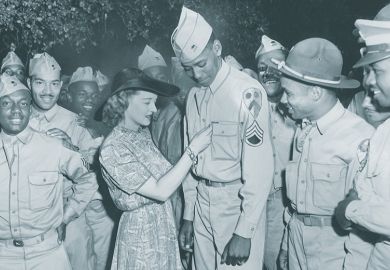Editors: Basil Glynn, James Aston and Beth Johnson
Publisher: Bloomsbury/Continuum
Edition: First
Pages: 224
Price: £17.99
ISBN: 9780826434982
This edited collection offers readings of popular mainstream television programmes (or texts, to use the preferred cultural studies term) that are likely to be familiar to most readers, even if they have not seen all of them. Perhaps inevitably for a discussion of sex on TV, HBO productions form a constant background presence.
The first part, "TV and the democratization of text", provides textual analyses of Shameless, Buffy the Vampire Slayer and True Blood as well as an intriguing account of online fan engagement with True Blood. Part two, "TV and the absence of sex" is anomalous in that the section deals largely with lesser-known works and institutions. It analyses Pushing Daisies (a short-lived US comedy-drama series), the Chinese series Woju, South Korea's My Lovely Sam Soon and the UK pay-per-view cable sex channel Television X. All these give rise to interesting discussions, although as a whole they sit uneasily in a text that is dominated by discussion of mainstream UK and US productions.
"TV sex and heritage", the third part of the text, claims to examine some of the difficulties in representing past sexual mores on current television and examines the methods used to "sex up", translate and regulate erotic content. It is just as concerned with the problems of adapting texts between media forms as it is with presenting relevant and passable versions of sexual histories. As with any edited collection, some problems have been skirted around, and the book could have benefited from a little more justification for the time frame of the collection beyond the definition of contemporary as recent(ish). There is little explanation of the rationale for choosing these particular texts (or the rather odd decision to juxtapose TV from the UK, US and East Asia), or why one chapter explores a TV channel while the rest are concerned with specific programmes or series. A fuller discussion of these editorial decisions might have helped to cement together the ensuing chapters.
The foreword to Television, Sex and Society is keen to stress that television is the most politicised of media. While this is debatable in an era in which the internet enables instant access to almost any sexual representation, the politics of sex on TV relies as much on not showing what can be found so easily elsewhere as it does on providing a range of sexual representations. In examining a selection of disparate texts, the book nevertheless usefully explores some of the institutional strategies and adopted modes of representation that allow, validate and exploit our voyeuristic fascination with sex on TV.
Who is it for? Undergraduate TV scholars.
Presentation: Concise, accessible and easy to navigate.
Would you recommend it? Yes, for anyone studying media representations or "readings" of television.
Register to continue
Why register?
- Registration is free and only takes a moment
- Once registered, you can read 3 articles a month
- Sign up for our newsletter
Subscribe
Or subscribe for unlimited access to:
- Unlimited access to news, views, insights & reviews
- Digital editions
- Digital access to THE’s university and college rankings analysis
Already registered or a current subscriber? Login



